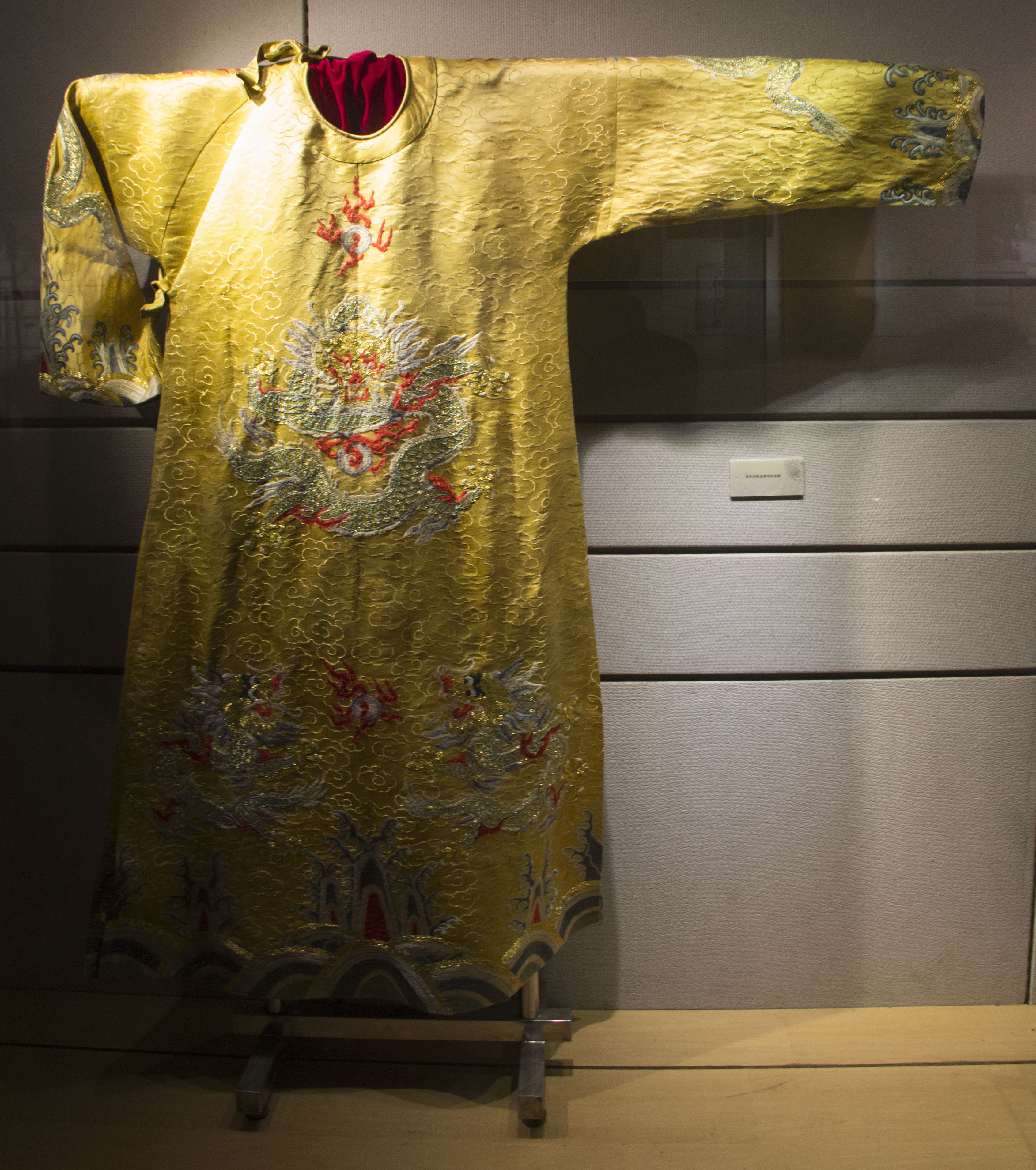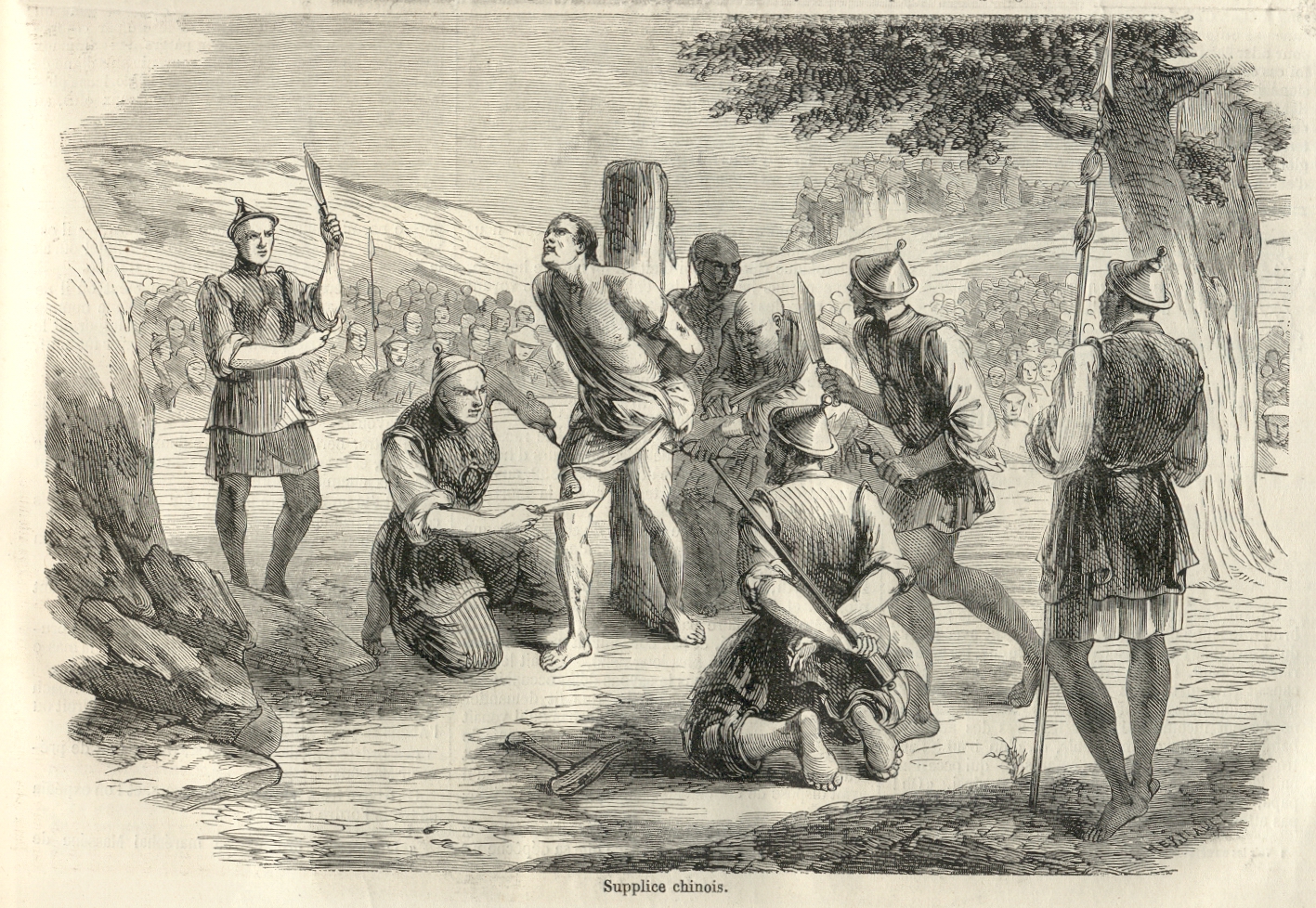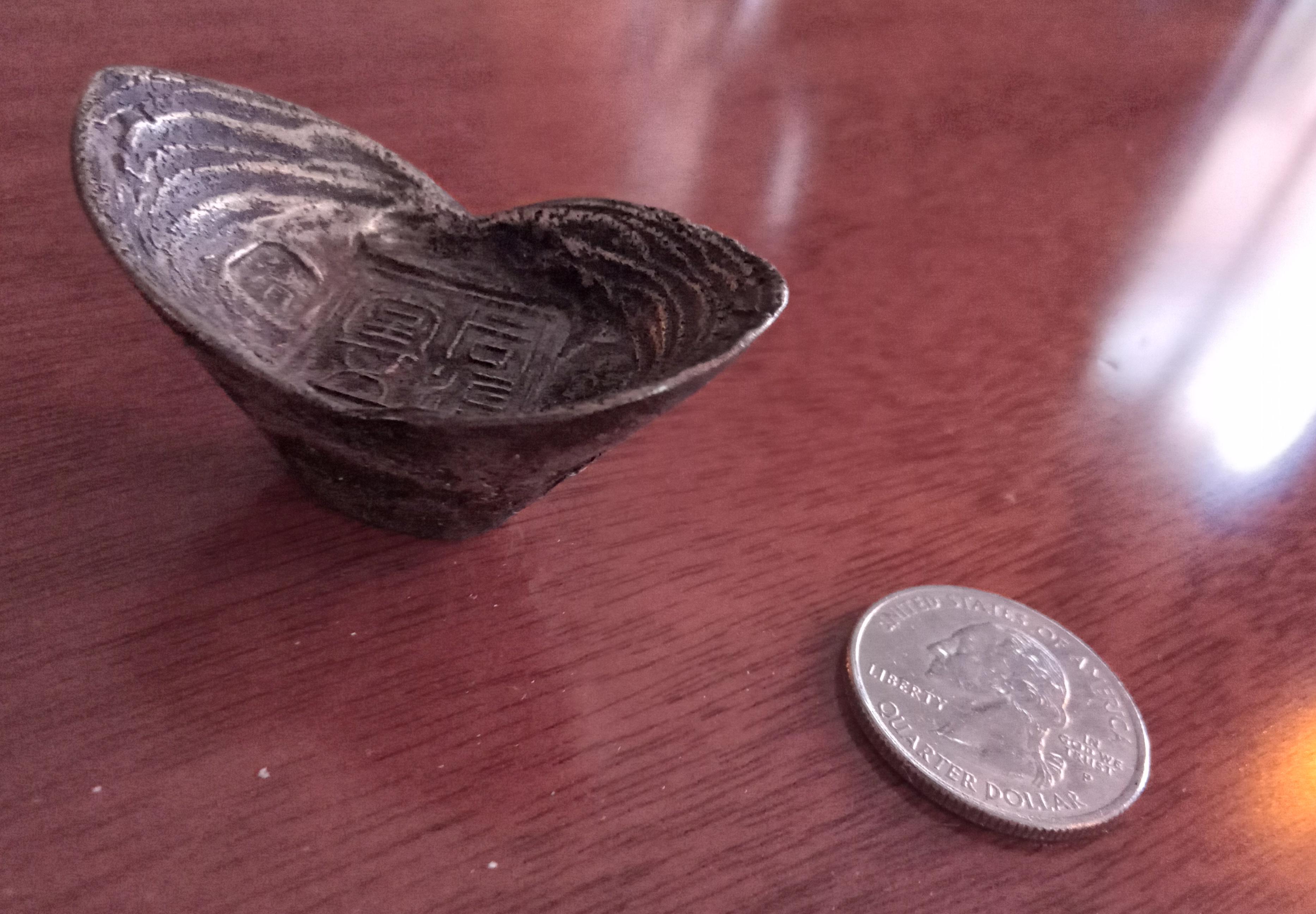|
Eight Tigers
The Eight Tigers (), sometimes referred to as the Gang of Eight (八黨), were a powerful group of eunuchs that controlled the Chinese imperial court during the reign of the Zhengde Emperor (r. 1505–1521) of the Ming dynasty. Led by Liu Jin, the remaining members of the coterie were Ma Yongcheng (馬永成), Gao Feng (高鳳), Luo Xiang (羅祥), Wei Bin (魏彬), Qiu Ju (丘聚), Gu Dayong (谷大用), and Zhang Yong (張永). Background Eunuchs in China Eunuchs are castrated men who have often been used as servants in imperial and noble households, due to the understanding that they would not be distracted by, or be a danger to, women. Eunuchs were often utilized in the imperial household as harem guards and attendants. The harems were considered necessary in order to help produce a male heir, and the eunuchs were trusted protectors. Before the Ming Dynasty, eunuchs had long been a powerful political force in China. In the Tang dynasty, from 821 until the dynasty's end, ... [...More Info...] [...Related Items...] OR: [Wikipedia] [Google] [Baidu] |
Eunuch (court Official)
A eunuch ( , ) is a male who has been castration, castrated. Throughout history, castration often served a specific social function. The earliest records for intentional castration to produce eunuchs are from the Sumerian city of Lagash in the 2nd millennium BCE. Over the millennia since, they have performed a wide variety of functions in many different cultures: courtiers or equivalent Domestic worker, domestics, for espionage or clandestine operations, ''castrato'' singers, Concubinage, concubines or sexual partners, religious specialists, soldiers, royal guards, government officials, and guardians of women or harem servants. Eunuchs would usually be servants or Slavery, slaves who had been castrated to make them less threatening servants of a royal court where physical access to the ruler could wield great influence. Seemingly lowly domestic functions—such as making the ruler's bed, bathing him, cutting his hair, carrying him in his litter (vehicle), litter, or even rel ... [...More Info...] [...Related Items...] OR: [Wikipedia] [Google] [Baidu] |
Hongzhi Emperor
The Hongzhi Emperor (30 July 1470 – 9 June 1505), also known by his temple name as the Emperor Xiaozong of Ming, personal name Zhu Youcheng, was the tenth emperor of the Ming dynasty, reigning from 1487 to 1505. He succeeded his father, the Chenghua Emperor. The Hongzhi Emperor was born during a time in which his father's favorite concubine, Lady Wan, and her supporters were eliminating all potential heirs to the throne. The former empress protected the young prince from Lady Wan, and he did not reunite with his father until the age of five, when he was named crown prince. From a young age, he displayed exceptional intelligence and excelled in his studies, receiving a comprehensive Confucian education. After ascending the throne in 1487, the emperor's administration was guided by Confucian ideology, and he himself was known for his diligence and hard work. He closely oversaw all state affairs, implementing measures such as reducing taxes and government spending, and appoin ... [...More Info...] [...Related Items...] OR: [Wikipedia] [Google] [Baidu] |
Bazhou, Hebei
Bazhou (), formerly Ba County, is a county-level city in Hebei province, China. It is under the jurisdiction of Langfang prefecture-level city A prefecture-level city () or prefectural city is an administrative division of the China, People's Republic of China (PRC), ranking below a province of China, province and above a Counties of the People's Republic of China, county in China's .... As of 2020, it had a population of over 743,226. Administrative divisions Towns: *Bazhou Town (), Nanmeng, Bazhou, Hebei, Nanmeng (), Xin'an (), Tang'erli (), Jianchapu (), Shengfang (), Yangfengang () Townships: * Chaheji Township (), Kangxianzhuang Township (), Dongyangzhuang Township (), Wangzhuangzi Township (), Dongduan Township () Climate Transportation There are three railway stations in Bazhou. Bazhou railway station is the oldest and is an intermediate stop on the Beijing–Kowloon railway and the western terminus of the Tianjin–Bazhou railway. Bazhou West rail ... [...More Info...] [...Related Items...] OR: [Wikipedia] [Google] [Baidu] |
Jiajing Emperor
The Jiajing Emperor (16September 150723January 1567), also known by his temple name as the Emperor Shizong of Ming, personal name Zhu Houcong, art name, art names Yaozhai, Leixuan, and Tianchi Diaosou, was the 12th List of emperors of the Ming dynasty, emperor of the Ming dynasty, reigning from 1521 to 1567. He succeeded his cousin, the Zhengde Emperor. The Jiajing Emperor was born as a cousin of the reigning Zhengde Emperor, so his accession to the throne was unexpected, but when the Zhengde Emperor died without an heir, the government, led by Senior Grand Secretary Yang Tinghe and Empress Zhang (Hongzhi), Empress Dowager Zhang, chose him as the new ruler. After his enthronement, a dispute arose between the emperor and his officials regarding the method of legalizing his accession. This conflict, known as the Great Rites Controversy, was a significant political issue at the beginning of his reign. After three years, the emperor emerged victorious, with his main opponents eithe ... [...More Info...] [...Related Items...] OR: [Wikipedia] [Google] [Baidu] |
Mongols
Mongols are an East Asian ethnic group native to Mongolia, China ( Inner Mongolia and other 11 autonomous territories), as well as the republics of Buryatia and Kalmykia in Russia. The Mongols are the principal member of the large family of Mongolic peoples. The Oirats and the Buryats are classified either as distinct ethno-linguistic groups or as subgroups of Mongols. The Mongols are bound together by a common heritage and ethnic identity, descending from the Proto-Mongols. Their indigenous dialects are collectively known as the Mongolian language. The contiguous geographical area in which the Mongols primarily live is referred to as the Mongol heartland, especially in discussions of the Mongols' history under the Mongol Empire. Definition Broadly defined, the term includes the Mongols proper (also known as the Khalkha Mongols), Buryats, Oirats, the Kalmyks and the Southern Mongols. The latter comprises the Abaga Mongols, Abaganar, Aohans, Arkhorchin, Asud, ... [...More Info...] [...Related Items...] OR: [Wikipedia] [Google] [Baidu] |
Yang Yiqing
Yang Yiqing (24 December 1454 – 5 September 1530), courtesy name Yingning, art name Sui'an, was a Chinese scholar-official, military general, and writer during the Ming dynasty. He held influential positions during the reigns of the Zhengde and Jiajing emperors in the early 16th century, serving in the northwestern frontier province of Shaanxi and various central government offices. These included the positions of minister of revenue, minister of personnel, and grand secretary. In 1526 and 1527–1529, he was appointed as the head of the Grand Secretariat. He was also highly regarded as a poet during his time. Biography Yang Yiqing was born in 1454 in Yunnan, and later resided in Zhenjiang Prefecture (present-day Dantu, Zhenjiang, Jiangsu Province). Yang Yiqing received a Confucian education and successfully passed the civil service examinations. In 1472, at the age of eighteen, he passed the highest level of the examinations, known as the palace examination, in Beijing. This ... [...More Info...] [...Related Items...] OR: [Wikipedia] [Google] [Baidu] |
Prince Of Anhua Rebellion
The Prince of Anhua rebellion, or the Prince of Anhua's uprising, refers to the uprising led by Zhu Zhifan, Prince of Anhua, against the reigning Ming emperor, Zhengde Emperor. This rebellion, which took place in Ningxia, one of the nine military regions on the Ming Chinese border with Mongolia, started on 12 May and ended on 30 May 1519, after 18 days. During this time, General Qiu Yue, who had pretended to join the rebels, led a group of pro-government soldiers to occupy the palace of the Prince of Anhua and capture him. The Prince of Anhua revolt was one of two princedom rebellions during the Zhengde Emperor's reign, and preceded the Prince of Ning rebellion in 1519. Background Zhu Zhifan was a member of the Ming dynasty and a descendant of Zhu Zhan, Prince of Qing. He was also the sixteenth son of the Hongwu Emperor, the founder and first emperor of the Ming dynasty. In 1492, he inherited the title of Prince of Anhua. He resided in Ningxia, which was one of the border regi ... [...More Info...] [...Related Items...] OR: [Wikipedia] [Google] [Baidu] |
Ministry Of Revenue (imperial China)
The Ministry or Board of Revenue was one of the Six Ministries under the Department of State Affairs in imperial China. Name The term "Ministry" or "Board of Revenue" is an English gloss of the department's purview. It is also similarly translated as the or . In Chinese, the various names of the department never referred to the government's monetary income. Instead, prior to the Sui dynasty, it was known as the ''Dùzhī'' from its role in overseeing government expenses. Under the Sui, it was known as the "Ministry of People" (''Mínbù'') from its role overseeing the census and its associated taxation. From the Tang to the Qing, it was known as the "Households Department" (''Hùbù''), again from its role in overseeing a census reckoned in households and its associated taxation. Administrative level *Tang dynasty & Song dynasty: subordinate to the Department of State Affairs *Yuan dynasty: subordinate to the Secretariat *Ming dynasty: originally subordinate to the Secretari ... [...More Info...] [...Related Items...] OR: [Wikipedia] [Google] [Baidu] |
Baoding
Baoding is a prefecture-level city in central Hebei province, approximately southwest of Beijing. As of the 2020 census, Baoding City had 11,544,036 inhabitants, of which 2,549,787 lived in the metropolitan area made of 4 out of 5 urban districts: Lianchi, Jingxiu, Qingyuan, and Mancheng all of which are largely conurbated. Accounting for about one-sixth of the population of Hebei Province. Baoding is among 13 Chinese cities with a population of over 10 million, ranking seventh. Zhuozhou City in the northern part has now grown into part of the Beijing metro area. Baoding was the capital of Zhili Province and the residence of the Viceroy of Zhili in the Qing dynasty. The city was also the capital of Hebei province until 1968, and is now a List of National Famous Historical and Cultural Cities in China, national historical and cultural city and one of the central cities in the Jing-Jin-Ji cluster, with the Xiong'an new area located within its jurisdiction. Name Baoding was known ... [...More Info...] [...Related Items...] OR: [Wikipedia] [Google] [Baidu] |
Lingchi
''Lingchi'' ( IPA: , ), usually translated "slow slicing" or "death by a thousand cuts", was a form of torture and execution used in China from roughly 900 until it was banned in 1905. It was also used in Vietnam and Korea. In this form of execution, a knife was used to methodically remove portions of the body over an extended period of time, eventually resulting in death. ''Lingchi'' was reserved for crimes viewed as especially heinous, such as treason. Even after the practice was outlawed, the concept itself has still appeared across many types of media. Etymology The word was used to describe the prolonging of a person's agony when the person is being killed. One theory suggests that it grew to be a specific torture technique. An alternative theory suggests that the term originated from the Khitan language, as the penal meaning of the word emerged during the Khitan Liao dynasty. Description The process involved tying the condemned prisoner to a wooden frame, usually in ... [...More Info...] [...Related Items...] OR: [Wikipedia] [Google] [Baidu] |
Tael
Tael ( ),"Tael" entry at the . or liang, also known as the tahil and by other names, can refer to any one of several measures used in and . It usually refer ... [...More Info...] [...Related Items...] OR: [Wikipedia] [Google] [Baidu] |
Chenghua Emperor
The Chenghua Emperor (9 December 1447 – 9 September 1487), also known by his temple name as the Emperor Xianzong of Ming, personal name Zhu Jianshen, changed to Zhu Jianru in 1457, was the ninth emperor of the Ming dynasty, reigning from 1464 to 1487. He succeeded his father, Emperor Yingzong. Zhu Jianshen was born in 1447 as the son of Emperor Yingzong. When he was only two years old, his father was captured by the Mongols during the Battle of Tumu Fortress, and his uncle ascended the throne as the Jingtai Emperor. During this time, Zhu Jianshen was appointed as crown prince, but later his uncle removed him from the position. Zhu Jianshen was not restored as crown prince until 1457, when Emperor Yingzong overthrew the ill Jingtai Emperor in a coup and reascended the throne. The Chenghua Emperor began his reign at the age of sixteen. During the initial years of his reign, he implemented a new policy that included tax cuts and a focus on strengthening the state's power. Howe ... [...More Info...] [...Related Items...] OR: [Wikipedia] [Google] [Baidu] |








